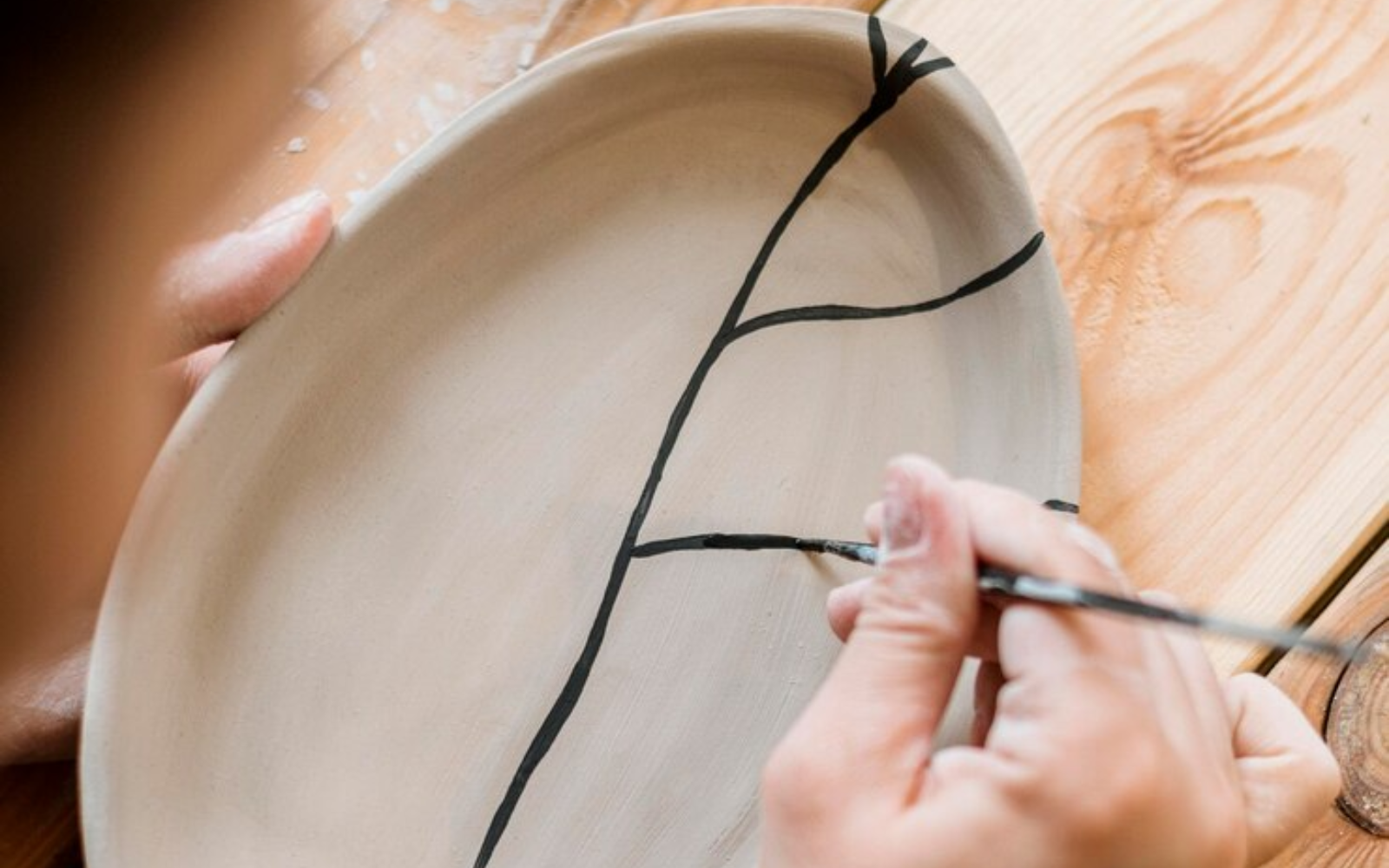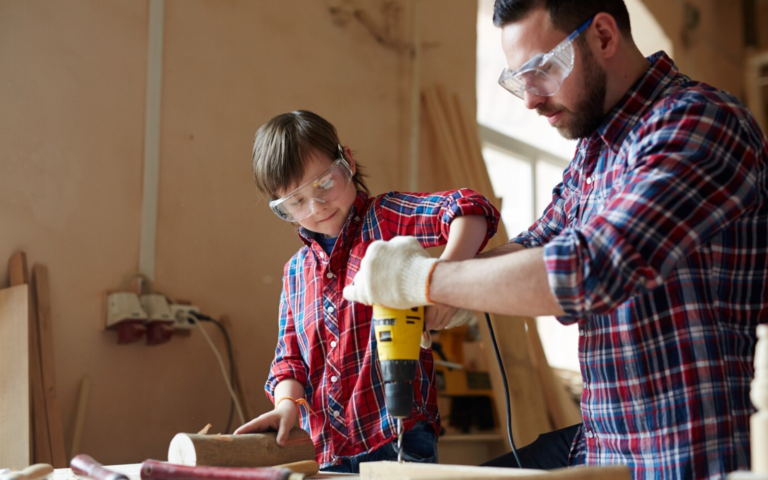Classic Craftsmanship with Contemporary Twists
The concept of classic craftsmanship conjures images of skilled artisans meticulously shaping materials into timeless pieces. However, in the modern era, this traditional concept has evolved, blending with contemporary styles and techniques. This article analyzes the fascinating realm where the age-old art of craftsmanship meets the innovation of the 21st century. We delve into various domains, from interior design and furniture making to textiles and architecture, illustrating how classic craftsmanship is being reimagined to fit the contemporary world. Classic craftsmanship is more than just a technique; it’s a storytelling medium, a way to preserve history and culture through tangible creations. As we journey through the various facets of this art form, we’ll see how it has been kept alive and relevant in our rapidly changing world. This analysis will not only highlight the beauty and resilience of these time-honored skills but also showcase their adaptability in the face of modern demands and aesthetics.
Understanding the significance of classic craftsmanship in the modern context requires a look back at its origins. Rooted in the skilled labor of artisans from centuries past, it represents a deep understanding of materials and a commitment to quality. Today, this legacy is carried forward, infused with contemporary design principles and technologies, resulting in a harmonious blend that appeals to both traditionalists and modernists. As we embark on this analysis, we will uncover the myriad ways in which classic craftsmanship continues to influence and enhance our lives. From the warm textures of a modern farmhouse interior to the intricate stitches of a crocheted wedding dress, each example serves as a testament to the enduring allure and relevance of classic craftsmanship in our contemporary world.
The Essence of Classic Craftsmanship in Modern Interior Design
Classic craftsmanship has long been the backbone of quality interior design, offering a sense of timelessness and durability that modern mass-produced items often lack. This section delves into the historical significance of classic craftsmanship in interior design and how it’s being integrated into contemporary spaces. The use of traditional techniques and materials, such as woodworking, stone masonry, and glassblowing, is still prevalent, but with a modern twist that aligns with today’s aesthetics. Classic design elements like ornate moldings, hand-carved furniture, and bespoke fixtures have been pivotal in shaping the luxurious and detailed interiors of the past. Today, these elements are reinterpreted in modern interiors, often simplified or combined with contemporary materials to create a unique blend that respects tradition while embracing modernity. This juxtaposition of old and new adds depth and character to spaces, making them both comfortable and visually intriguing.
A key aspect of incorporating classic craftsmanship in modern design is the role it plays in creating a timeless aesthetic. Unlike fleeting trends, classic craftsmanship offers a sense of permanence and quality. It’s about choosing pieces that are not only aesthetically pleasing but also well-made and durable. This approach resonates with the growing consumer desire for sustainability and quality over quantity. To truly appreciate the essence of classic craftsmanship in modern interior design, one must understand its ability to tell a story. Each handcrafted piece carries the marks of its maker, the cultural context of its creation, and a level of detail and Attention that mass-produced items cannot replicate. This storytelling aspect adds a layer of richness and authenticity to modern interiors, making them not just spaces to live in but spaces filled with meaning and history.
Reviving Classic Craftsmanship in Modern Farmhouse Style
The modern farmhouse style is a perfect example of how classic craftsmanship is being revived and appreciated in contemporary settings. Rooted in the simplicity and functionality of rural architecture, this style merges rustic charm with modern comfort, creating spaces that feel both nostalgic and fresh. Central to this style is the use of natural materials like wood, stone, and metal, crafted with traditional techniques to ensure authenticity and durability. Key elements of modern farmhouse design influenced by classic craftsmanship include exposed wooden beams, barn doors, and handcrafted cabinetry. These features not only add aesthetic value but also showcase the skill and artistry of traditional craftsmanship. The modern twist often comes in the form of updated color palettes, minimalist decor, and sleek lines, offering a clean and contemporary look while maintaining the warmth and character of the farmhouse aesthetic.
One of the hallmarks of this style is the blending of old and new. It’s not uncommon to see antique pieces, such as a vintage farmhouse table or a reclaimed wood bench, paired with modern lighting and appliances. This mix honors the past while accommodating the functional needs of the present. By doing so, it creates a living space that’s both historically rich and comfortably modern. Case studies of successful integrations of old and new in farmhouse interiors highlight the versatility and enduring appeal of classic craftsmanship. Designers often source authentic, handcrafted pieces and combine them with contemporary elements to create a space that feels both grounded in tradition and relevant to today’s lifestyle. This approach not only preserves the heritage of classic craftsmanship but also ensures its continued relevance in the ever-evolving world of interior design.
Classic Craftsmanship Meets Modern Furniture Design
The fusion of classic craftsmanship with modern design is particularly evident in the realm of furniture making. Traditional techniques like joinery, carving, and upholstery are being reinterpreted to meet contemporary design sensibilities. The tradition of craftsmanship in furniture making is steeped in history, with each era showcasing its unique style and techniques. Today, designers draw inspiration from these historical styles, reimagining them with a modern twist. For instance, the timeless elegance of a Chesterfield sofa is often updated with contemporary fabrics and colors, making it relevant for modern interiors. Contemporary interpretations of classic furniture pieces also reflect a shift in material usage. Designers are experimenting with a variety of materials, from sustainable woods to recycled metals, blending them with traditional techniques to create furniture that is both innovative and rooted in craftsmanship. This approach not only pushes the boundaries of design but also pays homage to the artisanal skills of the past. The impact of material innovation on classic furniture design cannot be overstated. The use of new materials and technologies has opened up a world of possibilities, allowing for greater creativity and functionality in furniture design. This has led to the creation of pieces that are not only visually striking but also more durable, comfortable, and adaptable to different spaces and styles.
Blending Eras: Classic Craftsmanship in Eclectic Interior Design
Eclectic interior design is a creative playground where various styles, textures, and eras coalesce. It’s in this diverse and dynamic environment that classic craftsmanship truly shines, adding depth and authenticity to the eclectic mix. The concept of eclectic design in interior decorating is all about embracing diversity. It allows for the combination of traditional elements like ornate mirrors or vintage rugs with modern furniture and art. The presence of classic craftsmanship in these items provides a sense of history and quality that anchors the eclectic design and gives it substance. Incorporating classic elements into eclectic spaces often involves thoughtful curation. It’s about finding the right balance between old and new, ensuring that each piece, whether it’s a hand-carved wooden chair or a mid-century modern lamp, contributes to the overall aesthetic without overwhelming it. The key is to create a harmonious blend where each item’s craftsmanship is respected and highlighted. Real-life examples of eclectic designs embracing classic elements demonstrate the limitless possibilities of this approach. Designers often use classic pieces as focal points, around which modern elements are arranged. This not only celebrates the craftsmanship of the piece but also creates an intriguing contrast that defines eclectic style.
Innovating Classic Craftsmanship in Kitchen Design
The kitchen, often referred to as the heart of the home, presents a unique opportunity to blend classic craftsmanship with modern design. Traditional kitchens are revered for their attention to detail and use of high-quality materials, but today’s homeowners also demand functionality and modern convenience. One of Maximum significant ways classic craftsmanship is manifested in modern kitchens is through custom cabinetry and joinery. These elements showcase the skill and precision of traditional woodworking, with intricate details and finishes that mass-produced cabinets simply cannot replicate. However, to adapt to contemporary needs, these cabinets are often designed with modern hardware, sleek lines, and innovative storage solutions, offering both beauty and practicality.
Countertops and backsplashes in modern kitchens also reflect this fusion. Materials like marble and granite, favorites for their timeless elegance, are being used alongside modern composites and recycled materials. The craftsmanship involved in shaping and installing these materials remains rooted in traditional techniques, ensuring durability and quality, while their styling aligns with modern design trends. Appliances and fixtures in modern kitchens are another area where classic craftsmanship and innovation intersect. While the exterior of appliances may have a vintage or retro look, reminiscent of the past, the technology inside is cutting-edge, offering efficiency and convenience. Similarly, fixtures like faucets and sinks are often designed to look classic but come with modern features like touchless operation or improved ergonomics.
Classic Craftsmanship in Architectural Elements
Architecture is another domain where the influence of classic craftsmanship is profound and enduring. The skill and artistry of traditional building techniques continue to be revered and incorporated into modern structures. This section discusses the role of craftsmanship in historical and modern architecture and the ways in which classic architectural features are being reinterpreted in contemporary design. Historically, architectural craftsmanship was not just about construction; it was an art form. Elements like hand-carved stone facades, intricate woodwork, and bespoke ironmongery were hallmarks of this artistry. Today, these elements are still celebrated and often incorporated into modern buildings, either as focal points or as subtle nods to the past.
Incorporating classic architectural features into contemporary designs is a challenge that many modern architects embrace. This might involve restoring and repurposing old buildings with modern functionalities or incorporating traditional design elements like arches or ornamental moldings into new constructions. These practices not only preserve the craftsmanship of the past but also create a unique aesthetic that blends history with modernity. Case studies of architectural projects where classic craftsmanship has been integrated into modern structures offer insights into this creative process. Whether it’s a modern home built around historic ruins or a commercial building that incorporates traditional masonry techniques, these projects showcase the versatility and timelessness of classic craftsmanship in the context of contemporary architecture.
Sustainability and Classic Craftsmanship in Contemporary Design
In today’s world, where sustainability is increasingly paramount, classic craftsmanship offers an environmentally friendly alternative to mass production. The sustainable aspect of classic craftsmanship lies in its approach to materials and production. Traditional techniques often involve locally sourced materials and hand-made processes that have a lower environmental impact compared to industrial manufacturing. Additionally, the durability and longevity of handcrafted items mean they don’t need to be replaced as often, reducing waste. Handcrafted furniture, for example, can be made from sustainably harvested wood and finished with natural oils and waxes, offering an eco-friendly alternative to factory-made furniture that often uses synthetic materials and finishes. Similarly, in textiles, handwoven fabrics made from natural fibers not only carry the imprint of traditional craftsmanship but are also biodegradable and have a smaller carbon footprint.
Eco-friendly design projects that emphasize classic craftsmanship demonstrate how sustainability and aesthetics can go hand in hand. These projects often involve renov ating existing structures with a focus on preserving their historic elements while incorporating modern energy-efficient technologies. By doing so, they maintain the character and craftsmanship of the original construction while adapting to contemporary environmental standards. This approach can be seen in restored heritage homes that retain their original woodwork and masonry but are updated with solar panels, energy-efficient windows, and green building materials. The role of classic craftsmanship in sustainable design extends beyond structural elements to include decor and accessories. Artisans around the world are turning to sustainable practices, using recycled, upcycled, and eco-friendly materials to create beautiful, handcrafted items. These pieces not only add aesthetic value to a space but also tell a story of environmental responsibility and cultural preservation. By integrating sustainable practices with traditional craftsmanship, designers and artisans are creating a new paradigm in the design world. This approach not only honors the skills and traditions of the past but also aligns with the pressing need for sustainability in our modern world. As such, classic craftsmanship becomes a bridge between historical artistry and contemporary environmental consciousness.
The Impact of Technology on Classic Craftsmanship
In the digital age, technology has become a catalyst for innovation in classic craftsmanship. One of Maximum significant impacts of technology on classic craftsmanship is the ability to preserve and replicate intricate designs with precision. Digital tools like 3D scanning and CNC (Computer Numerical Control) machines enable artisans to replicate complex patterns and shapes that would be time-consuming and difficult to achieve by hand. This not only speeds up the production process but also allows for the preservation of traditional designs that might otherwise be lost. However, the integration of technology into classic craftsmanship is not without its challenges. It requires a delicate balance to ensure that the soul and authenticity of handcrafted items are not lost in the process. Artisans and designers must navigate how to use technology as a tool to enhance their craft without diminishing the value of the hand-made and the artisan’s personal touch. Case studies of tech-enhanced classic craftsmanship projects illustrate the exciting possibilities of this fusion. From digitally designed hand-woven textiles to precision-cut wooden furniture, these examples show how technology can expand the boundaries of traditional crafts. They also highlight the evolving role of the artisan in the modern world, where craftsmanship and technology coexist.
Educating the Next Generation in Classic Craftsmanship
The preservation of classic craftsmanship for future generations is an important aspect of keeping these traditions alive. This section focuses on the importance of educating the next generation in these age-old techniques, discussing modern education and training methods in classic craftsmanship, and highlighting programs and initiatives that support this cause. The transmission of craftsmanship skills from one generation to the next has always been a cornerstone of keeping these traditions alive. However, in a world dominated by mass production and digital technology, there’s a growing need to actively engage the younger generation in these crafts. This involves not only teaching the technical skills but also instilling an appreciation for the artistry and history behind them.
Modern education in classic craftsmanship often blends traditional techniques with contemporary design principles. This approach not only keeps the craft relevant but also makes it more appealing to young learners. Vocational schools, workshops, and apprenticeship programs play a key role in this educational process, offering hands-on experience and mentorship from seasoned artisans. Programs and initiatives supporting classic craftsmanship education are in this endeavor. These might include scholarships for aspiring artisans, grants for craftsmen to continue their work, or community projects that promote traditional crafts. Such initiatives not only provide the necessary resources for learning and practicing these crafts but also help to build a community around them, ensuring their continued relevance and survival.
Timeless Techniques: The Role of Traditional Craftsmanship in Today’s Homes
Traditional craftsmanship has long been revered for its precision, dedication, and the unique character it brings to various design elements within the home. As contemporary design trends continue to evolve, the integration of these age-old techniques has proven essential in creating environments that are not only visually appealing but also inherently comforting and durable. This deep-seated respect for historical methodologies is evident in the way architects and designers today are incorporating traditional skills into the modern home’s infrastructure, ensuring that each space is both functional and aesthetically rich.
One of the most significant contributions of traditional craftsmanship to contemporary home design is the ability to infuse spaces with a sense of history and authenticity. Whether it’s through the meticulous selection of materials or the employment of artisanal techniques, the incorporation of these elements is seen in everything from hand-carved wooden furniture to custom wrought-iron fixtures. Each piece tells a story, much like a carefully curated artwork that enhances the overall narrative of the space. The result is a home that feels grounded in history yet thoroughly modern, offering a refuge that is both serene and stimulating.
Moreover, traditional craftsmanship champions the use of high-quality, natural materials that stand the test of time—not just in terms of durability but also in style. The tactile nature of hand-finished surfaces or the rich patina of aged metals adds layers of depth and intrigue to the interiors. These materials are often sourced locally, supporting regional artisans and reducing the environmental impact associated with long-distance transportation. This approach not only emphasizes sustainability but also promotes a connection to the local culture and heritage, echoing the community’s enduring techniques and aesthetic sensibilities.
In terms of functionality, homes designed with traditional craftsmanship principles prioritize long-lasting quality and timeless appeal over transient trends. This is particularly evident in custom-built features that are designed to fit specific spaces perfectly. From built-in cabinetry in a bespoke kitchen to a custom-designed staircase in a foyer, these elements are meticulously crafted to maximize the functionality of each area while maintaining the integrity of the overall design vision. The custom-fit solutions offered by traditional craftsmanship ensure that no space is wasted, and every design element is as practical as it is beautiful.
The appeal of traditional craftsmanship in contemporary design also extends to its ability to create a bespoke atmosphere that reflects the homeowner’s personal style and preferences. Unlike mass-produced items, handcrafted elements can be tailored to individual tastes and requirements, offering a level of personalization that is rarely achieved with off-the-shelf products. This bespoke approach allows homeowners to truly make their mark on their living spaces, crafting environments that are distinctly their own.
Furthermore, the revival and integration of traditional craftsmanship techniques serve as a form of cultural preservation, bridging the gap between past and present. As these techniques are passed down through generations, they carry with them the stories, traditions, and skills of earlier times, keeping them alive in the context of contemporary design. This aspect is particularly important in an age where globalization and homogenization are prevalent, offering a counter-narrative that values diversity and regional uniqueness.
Ultimately, traditional craftsmanship in contemporary home design does more than just beautify spaces—it builds a foundation of quality, sustainability, and personal connection that enriches living environments. It’s a celebration of human skill and creativity, a homage to the past, and a commitment to the future. As we continue to navigate through rapidly changing design trends, the enduring appeal of traditional craftsmanship provides a steady, reliable anchor that values quality over quantity, ensuring that homes are not only designed for today but built for many tomorrows.
Outcome – Future of Classic Craftsmanship in the Contemporary World
Finally, the intersection of classic craftsmanship with contemporary design and technology is not just a trend but a testament to the adaptability and enduring appeal of traditional crafts. The key takeaway is that classic craftsmanship is not a relic of the past but a living, evolving practice that continues to find new expressions and applications in the contemporary world. By embracing innovation and adapting to current needs and tastes, these time-honored skills remain vital and relevant. They offer a counterpoint to the impersonal nature of mass production, bringing a human touch, history, and quality to our lives.
Looking ahead, the future of classic craftsmanship in the contemporary world appears promising. With a growing appreciation for handmade, sustainable, and unique items, there’s a renewed interest in learning and preserving these skills. Moreover, the integration of technology opens up new possibilities for innovation within traditional crafts, making them more accessible and adaptable to modern lifestyles. Finally, the responsibility of preserving and advancing classic craftsmanship lies with all of us – artisans, consumers, educators, and enthusiasts. By valuing and investing in handcrafted products, supporting artisan communities, and passing on these skills to future generations, we can ensure that the art of classic craftsmanship continues to enrich our world for years to come.
See More At: woolen8wonders.com







